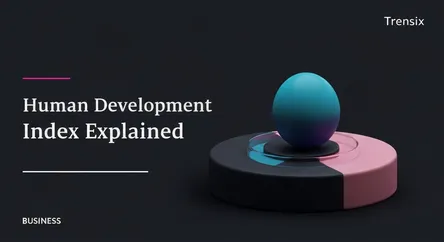Business
Human Development Index Explained

Explore the Human Development Index (HDI), the UN's composite metric for assessing a country's health, education, and standard of living.
What is it?
The Human Development Index (HDI) is a summary measure of average achievement in key dimensions of human development: a long and healthy life, being knowledgeable, and having a decent standard of living. Published by the United Nations Development Programme (UNDP), it ranks countries into four tiers of human development. Instead of focusing solely on economic growth like GDP, the HDI provides a more holistic view by incorporating health (life expectancy at birth), education (mean and expected years of schooling), and income (Gross National Income per capita).
Why is it trending?
The HDI consistently trends when the annual Human Development Report is released, sparking global conversations about inequality, progress, and setbacks. Recently, discussions around post-pandemic recovery, climate change impacts, and geopolitical conflicts have intensified focus on HDI data. It highlights how these crises disproportionately affect development, pushing countries backward and widening the gap between the developed and developing world. It serves as a critical tool for policymakers and organizations to track progress towards the Sustainable Development Goals (SDGs).
How does it affect people?
A country's HDI score directly correlates with the quality of life for its citizens. A higher HDI typically means people have better access to healthcare, live longer, achieve higher levels of education, and enjoy greater economic opportunities. It influences national policy priorities, guiding government spending on social services. For individuals, it's a powerful indicator of their potential for social mobility and overall well-being. International aid, investment, and global perceptions of a nation are also heavily influenced by its HDI ranking.